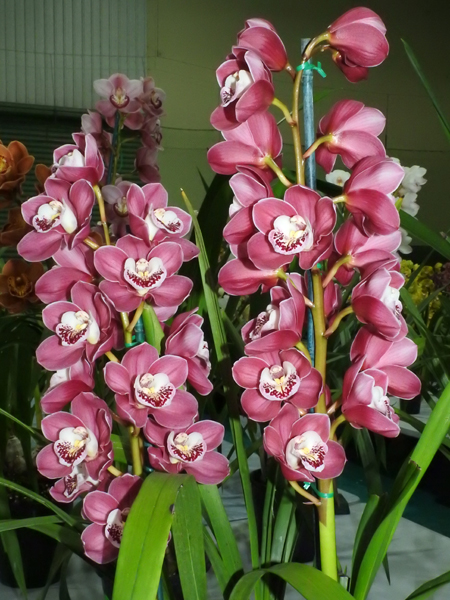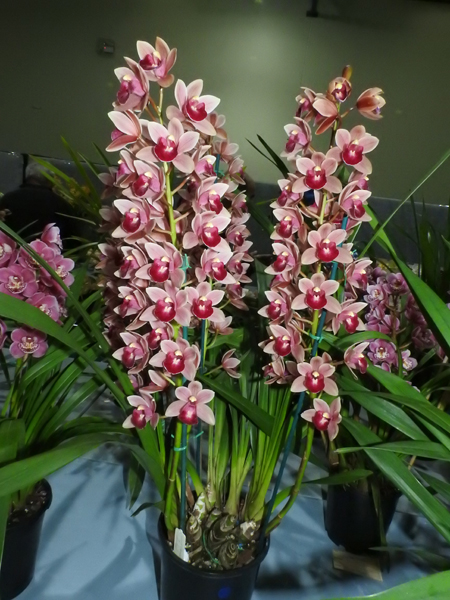Growing Information
Cymbidium Culture
Cymbidium orchids are probably the easiest orchids to grow in Sydney. In their natural environment, cymbidiums grow at higher altitudes in Asia, down through South East Asia and extend down, at lower altitudes, into Australia. The cycle of cool nights and warm days during spring and into early summer is important for flower spike formation. Warmer weather in the summer enhances the growth of the plant and the development of the flower spikes for the next flowering season (early winter, through to late spring). Cymbidiums grow outside very successfully, but benefit from some protection, especially when flowering.
Temperature: Cymbidiums are quite resilient and can tolerate quite low (0ºC) to quite high (40ºC) for short periods. If frosts are expected, plants should be moved undercover. If the air is moist and there is some movement, the foliage usually won’t freeze, but the softer flowers may suffer damage if exposed. With extreme heat, plants should be misted to cool them. Australian natives and some of their hybrids are more resilient to these extremes.
Light: During the spring-autumn growing season, plants should have as many hours of filtered sunlight as possible. 50% shadecloth can achieve this, though extra shading may be necessary during summer. If you only have a few plants, filtered light from under a tree can be sufficient. Generally the colour of the foliage should be green to golden-green, not a rich dark green. As buds come out of the sheath, white green and pastel coloured varieties will benefit from extra shading to avoid staining of the segments by dark pigments (similar to our suntan).
Watering: During the growing season, regular watering is required 2-3 times per week in summer, while weekly or less in winter can be sufficient. Generally it is best to water in the early morning or late afternoon. Remember – they should be kept moist, not waterlogged.
Potting: If you have only a few plants, it is best to use a prepared orchid potting mix, available from most nurseries. Cymbidiums usually do not grow well in soil. Repotting should be done after flowering. Repotting can be either a time to divide the plants or move it on to a larger pot. It is the time to remove old, leafless bulbs (backbulbs) as these have contributed to past flowering and have become a site of food storage. Too many backbulbs can hinder the progress of a plant. When putting into a larger pot, usually allow for 2 years growth. When dividing, ensure any wound sites are sealed by allowing them to dry or sealing with a pruning agent, i.e. sulfur, steriprune or cinnamon. Hold the plant in the pot and pour the potting mix in, tapping on the side of the pot to allow it to spread out and not leave large, empty spaces. Press the mix firmly around the root mass up to and around the first 1/3 of the green bulbs. Place the plants in a cool, shady, protected area for about 2 weeks, before returning to your normal growing area. View a re-potting demonstration from the National Orchid Extravaganza on Vimeo.
Fertilising: Any quality fertiliser, such as Neutrog, Aquasol, Maxicrop etc. applied at half the recommended rate fortnightly during the active growing period is sufficient, or you may prefer to use a slow release fertiliser such as Osmacote or Nutricote, which will then fertilise as you water.
Pests: With good culture, cymbidiums are relatively pest free. They can at times however be subject to scale, spider mites (on the underside of leaves), aphids, slugs, snails and grasshoppers. Check plants regularly. Snail bait can control slugs and snails. For other pests, obtain a reliable recommendation as to what is best to use and always follow all directions carefully.

